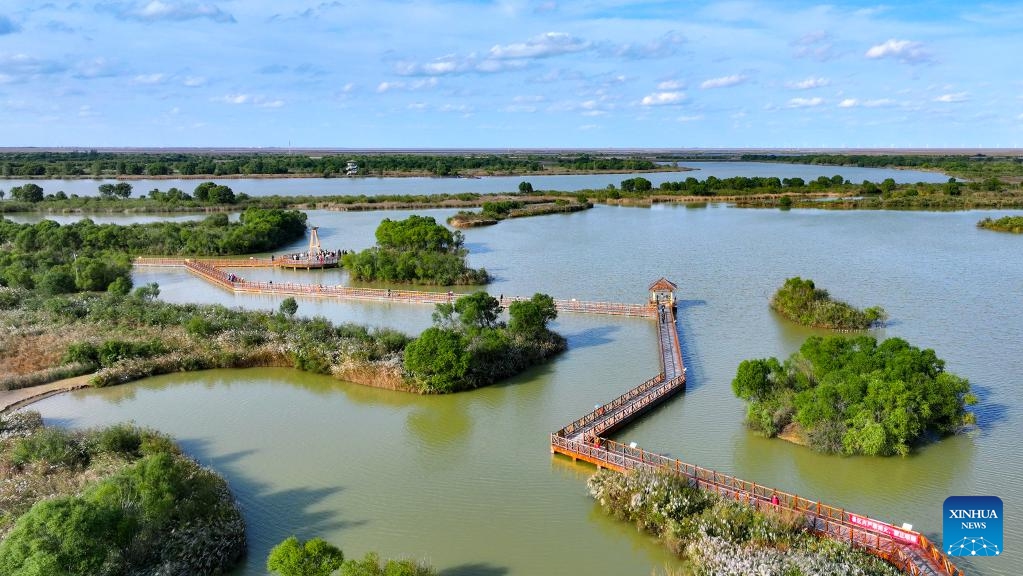Marine fisheries considering new restrictions on blue crab harvests – Public Radio East

Report on Proposed Blue Crab Harvest Restrictions in North Carolina and Alignment with Sustainable Development Goals
Background on Management Plan
The North Carolina Division of Marine Fisheries and the Marine Fisheries Commission are evaluating new restrictions on blue crab harvesting. This review follows the determination that measures implemented in 2020 have not successfully rebuilt the blue crab stock, necessitating a new adaptive management plan to ensure the fishery’s long-term health.
Conservation Efforts in Line with SDG 14 (Life Below Water)
The proposed regulations are a direct effort to address Sustainable Development Goal 14, which focuses on the conservation and sustainable use of marine resources. By implementing science-based management plans, the state aims to restore fish stocks and end overfishing, aligning with Target 14.4.
- A proposed ban on the harvest of mature female blue crabs from January through May.
- A proposed limit of 10 bushels per trip from June through December.
- Other options under consideration include stricter size limits and additional seasonal closures.
Socio-Economic Impacts and SDG 8 (Decent Work and Economic Growth)
Local entities, including the Kill Devil Hills Board of Commissioners, have voiced opposition, highlighting potential conflicts with SDG 8, which promotes sustained, inclusive, and sustainable economic growth and decent work for all. Concerns center on the economic viability of the local crabbing industry and the livelihoods it supports.
- Opponents project that the new rules could reduce crab harvests by approximately 22 percent.
- The restrictions are expected to have a direct negative financial impact on commercial fishermen and seafood dealers.
- The broader coastal economy, which relies on the crabbing industry, faces significant disruption.
Stakeholder Engagement and SDG 17 (Partnerships for the Goals)
Resolving the tension between ecological preservation (SDG 14) and economic stability (SDG 8) requires a multi-stakeholder approach, as encouraged by SDG 17. The decision-making process involves input and collaboration from various governmental, industry, and community bodies.
- North Carolina Division of Marine Fisheries
- Marine Fisheries Commission
- Kill Devil Hills Board of Commissioners
- North Carolina Coastal Counties Fisheries Coalition
- Albemarle Commission
- The public, through a formal comment period
Public Consultation and Path Forward
To ensure an inclusive and balanced outcome, public comments on the Blue Crab Adaptive Management plan are being solicited. A public comment form will be available on the NC DEQ Marine Fisheries Commission webpage in conjunction with its next quarterly meeting, providing a platform for community participation in this critical sustainability issue.
Analysis of Sustainable Development Goals in the Article
1. Which SDGs are addressed or connected to the issues highlighted in the article?
-
SDG 8: Decent Work and Economic Growth
The article directly connects to this goal by discussing the economic implications of the proposed fishing restrictions. It highlights concerns that the new rules could “greatly impact the crabbing industry,” affecting “commercial fishermen, seafood dealers, and local economies.” This focuses on the balance between environmental regulation and ensuring the economic viability of industries that provide jobs and support local communities.
-
SDG 12: Responsible Consumption and Production
This goal is relevant as the core issue is the sustainable management of a natural resource. The article discusses the need for a “Blue Crab Adaptive Management plan” because previous measures were not “successful in rebuilding the blue crab stock.” This points to the need for sustainable production patterns within the crabbing industry to ensure the long-term availability of blue crabs.
-
SDG 14: Life Below Water
This is the most central SDG to the article. The entire discussion revolves around the conservation and sustainable use of a marine resource—the blue crab. The proposed restrictions, such as banning the harvest of mature female crabs and imposing trip limits, are direct attempts to manage marine fisheries, end overfishing, and “rebuild the blue crab stock,” which are key objectives of SDG 14.
2. What specific targets under those SDGs can be identified based on the article’s content?
-
Target 8.3: Promote development-oriented policies that support productive activities, decent job creation… and encourage the formalization and growth of micro-, small- and medium-sized enterprises…
The article’s focus on the “direct impact on commercial fishermen, seafood dealers, and local economies” relates to this target. The crabbing industry is largely composed of small-scale enterprises whose livelihoods are threatened by the proposed regulations. The opposition from the Kill Devil Hills Board of Commissioners reflects a desire for policies that support these local businesses.
-
Target 12.2: By 2030, achieve the sustainable management and efficient use of natural resources.
The article is centered on the attempt by the North Carolina Division of Marine Fisheries to implement an “Adaptive Management plan” for blue crabs. This plan, and the debate around it, is a direct effort to achieve sustainable management of this natural resource, as previous efforts failed to rebuild the stock.
-
Target 14.4: By 2020, effectively regulate harvesting and end overfishing… and implement science-based management plans, in order to restore fish stocks in the shortest time feasible…
This target is explicitly addressed. The article states that the North Carolina Division of Marine Fisheries is considering new restrictions because measures from 2020 “have not been successful in rebuilding the blue crab stock.” The proposed amendment, which includes seasonal bans and limits, is a regulatory action aimed at restoring the blue crab population, directly aligning with the goal of ending overfishing and implementing management plans to restore fish stocks.
3. Are there any indicators mentioned or implied in the article that can be used to measure progress towards the identified targets?
-
Indicator for Target 8.3: Economic impact on the local fishing industry.
The article implies this indicator by stating that the proposed changes “could reduce crab harvests by about 22 percent.” This percentage serves as a direct, quantifiable measure of the potential negative economic impact on the livelihoods of those in the crabbing industry. The overall health of the “coastal economy” is another implied metric.
-
Indicator for Target 12.2 and 14.4: The status of the blue crab stock.
The primary indicator for measuring the success of the management plan is the health of the blue crab population. The article’s central premise is that action is needed to “rebuild the blue crab stock.” Therefore, the size, density, and reproductive capacity of the blue crab population would be the key indicators used to measure progress towards sustainable management and the restoration of the fish stock.
4. Table of SDGs, Targets, and Indicators
| SDGs | Targets | Indicators Identified in the Article |
|---|---|---|
| SDG 8: Decent Work and Economic Growth | Target 8.3: Promote policies that support productive activities and small- to medium-sized enterprises. | The economic impact on the crabbing industry, measured by the percentage reduction in crab harvests (e.g., “reduce crab harvests by about 22 percent”) and the effect on the “coastal economy.” |
| SDG 12: Responsible Consumption and Production | Target 12.2: Achieve the sustainable management and efficient use of natural resources. | The success of the “Blue Crab Adaptive Management plan” in achieving sustainable harvesting levels. |
| SDG 14: Life Below Water | Target 14.4: Effectively regulate harvesting and end overfishing to restore fish stocks. | The status of the blue crab population, measured by whether the management actions are successful in their goal to “rebuild the blue crab stock.” |
Source: publicradioeast.org
What is Your Reaction?
 Like
0
Like
0
 Dislike
0
Dislike
0
 Love
0
Love
0
 Funny
0
Funny
0
 Angry
0
Angry
0
 Sad
0
Sad
0
 Wow
0
Wow
0















































/environment-climate-change-and-health-(ech)/water-sanitation-hygiene-and-health-(wsh)/landfill-tuvalu-36092.tmb-1200v.jpg?sfvrsn=5c21fe40_1#)


.jpg.webp?itok=0ZsAnae9#)


























